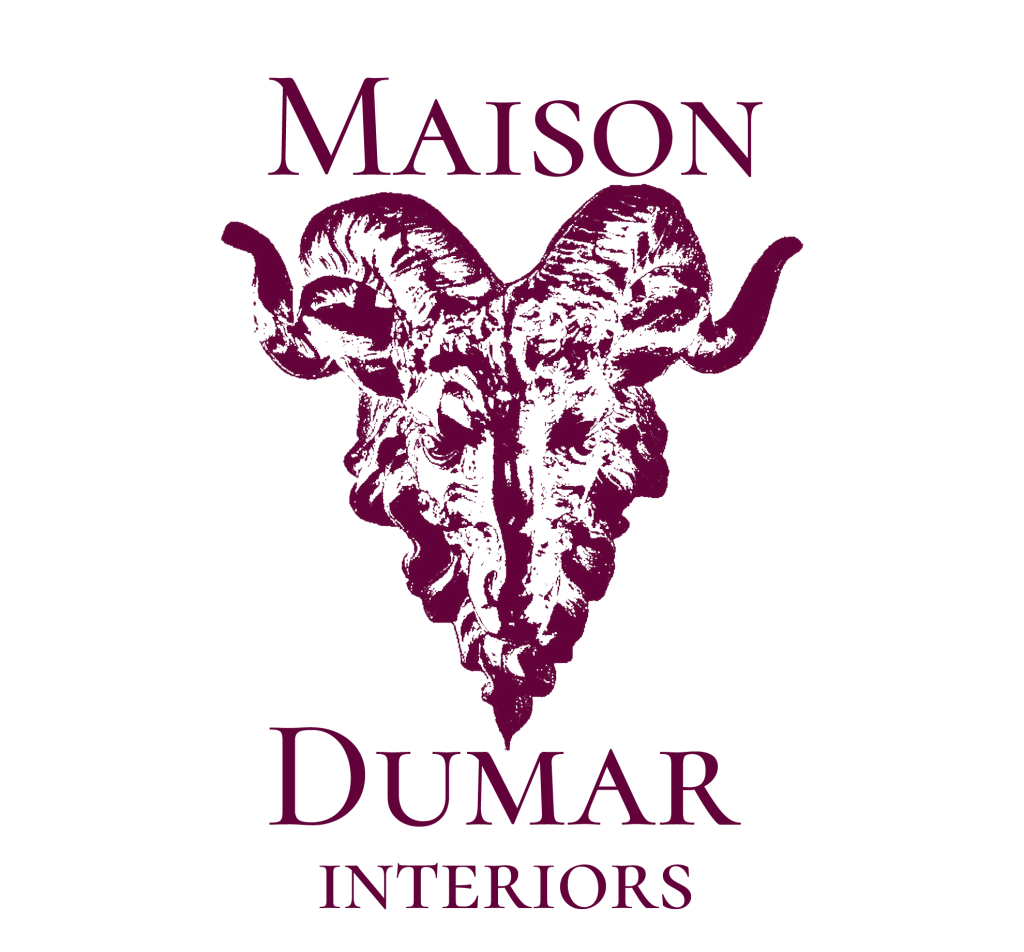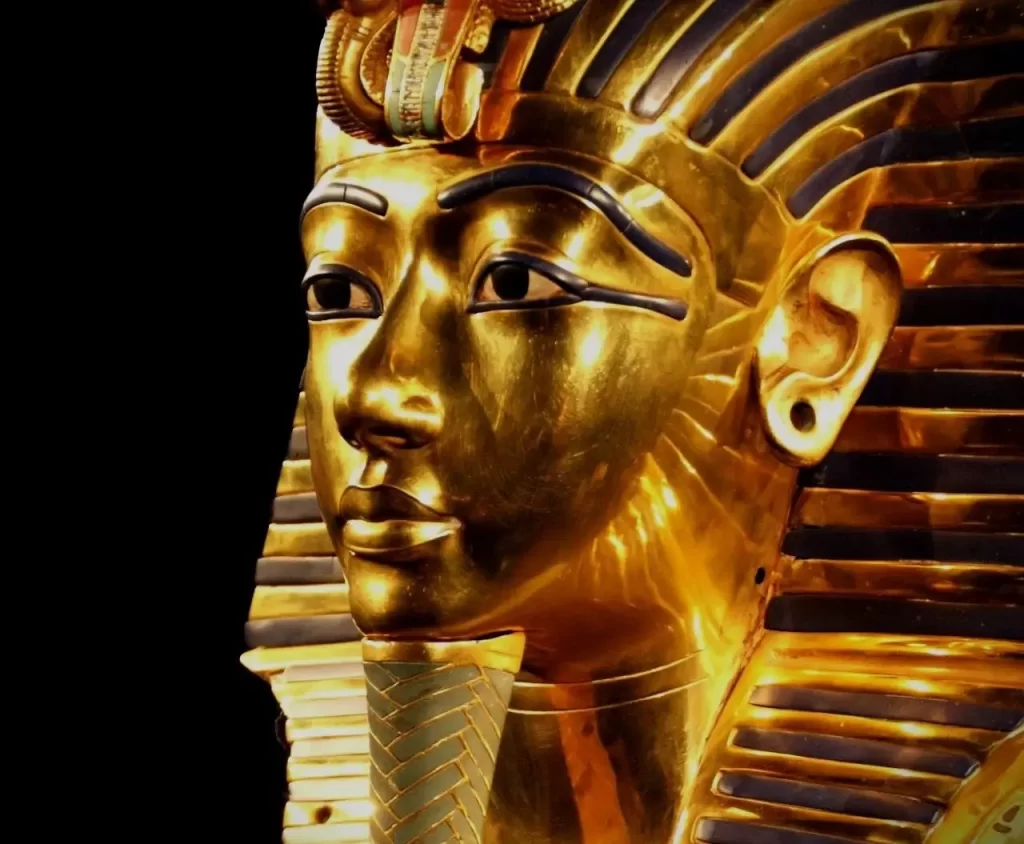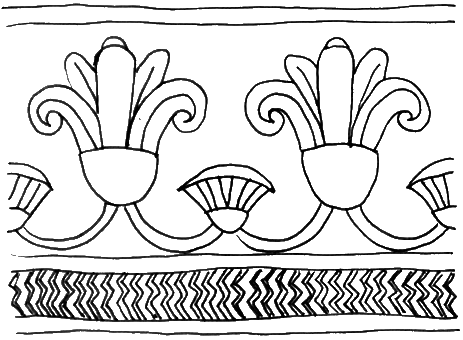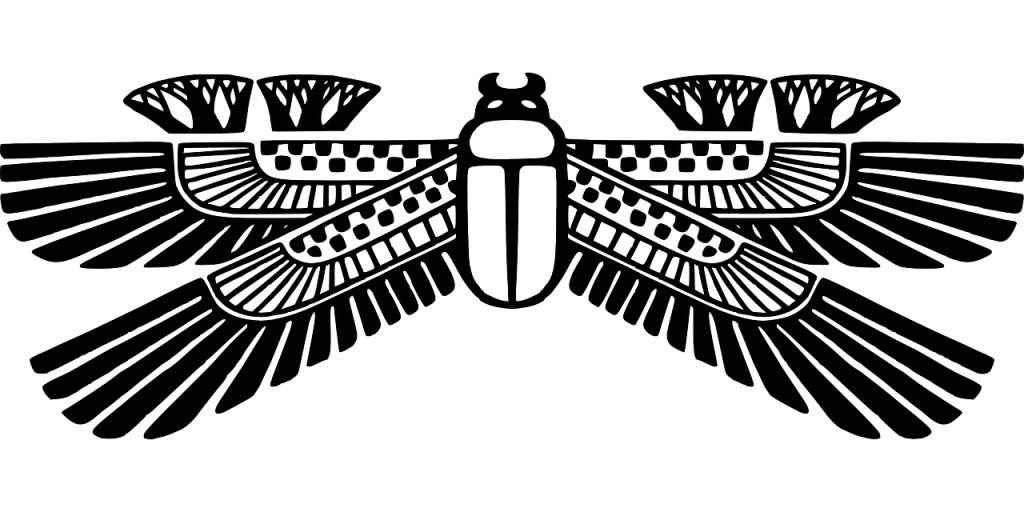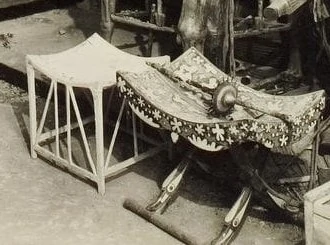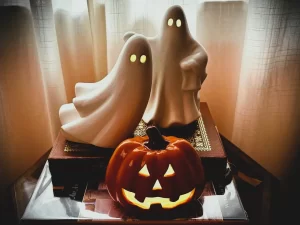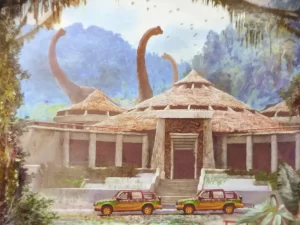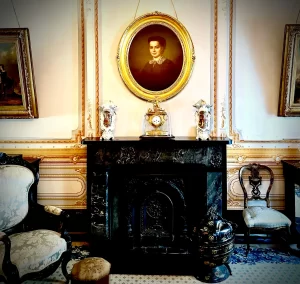This month marks the 100th anniversary of the discovery of the tomb of King Tutankhamun. Beginning on November 4, 1922, and running throughout the rest of that month, a team led by Egyptologist Howard Carter and funded by George Herbert, 5th Earl of Carnarvon (and owner of Highclere Castle of later Downton Abbey fame) slowly made their way into the vaults of a tomb that had long evaded detection.
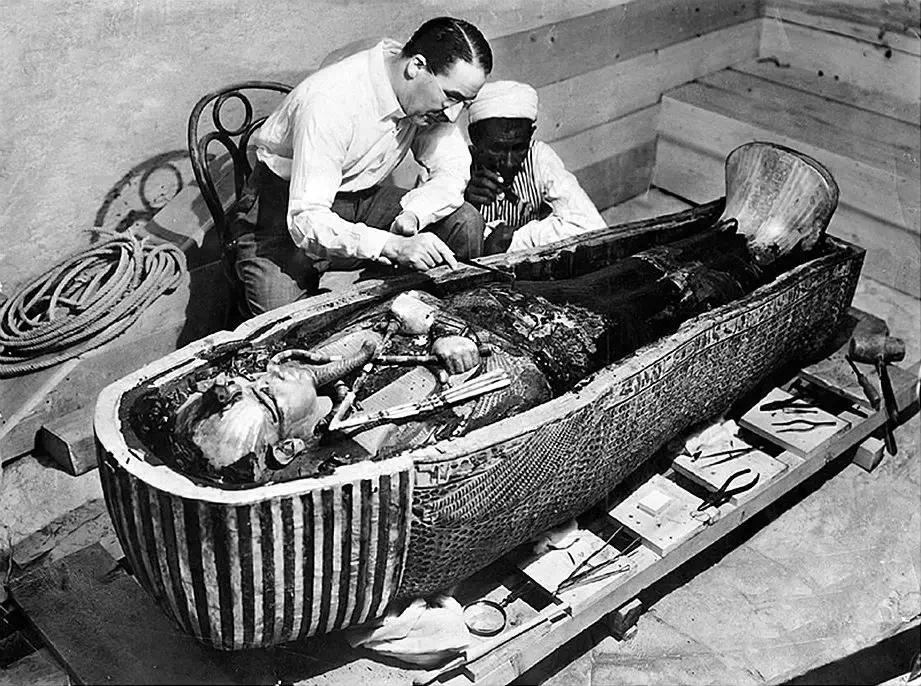
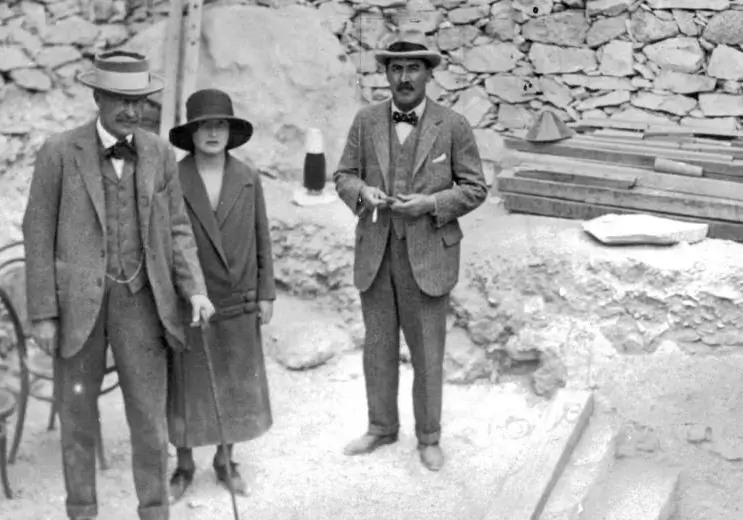
The discovery of the tomb of “King Tut”—as he was nicknamed by the media—proved important because it was the last royal tomb to be discovered in Egypt’s Valley of the Kings, and because it was one of the most intact royal tombs ever found. The discovery led to a media frenzy and sparked “Egyptomania” among the global public. The fascination only expanded when the Earl of Carnarvon died less than six months later of an infected mosquito bite, leading to speculation of an ancient curse placed on the tomb.
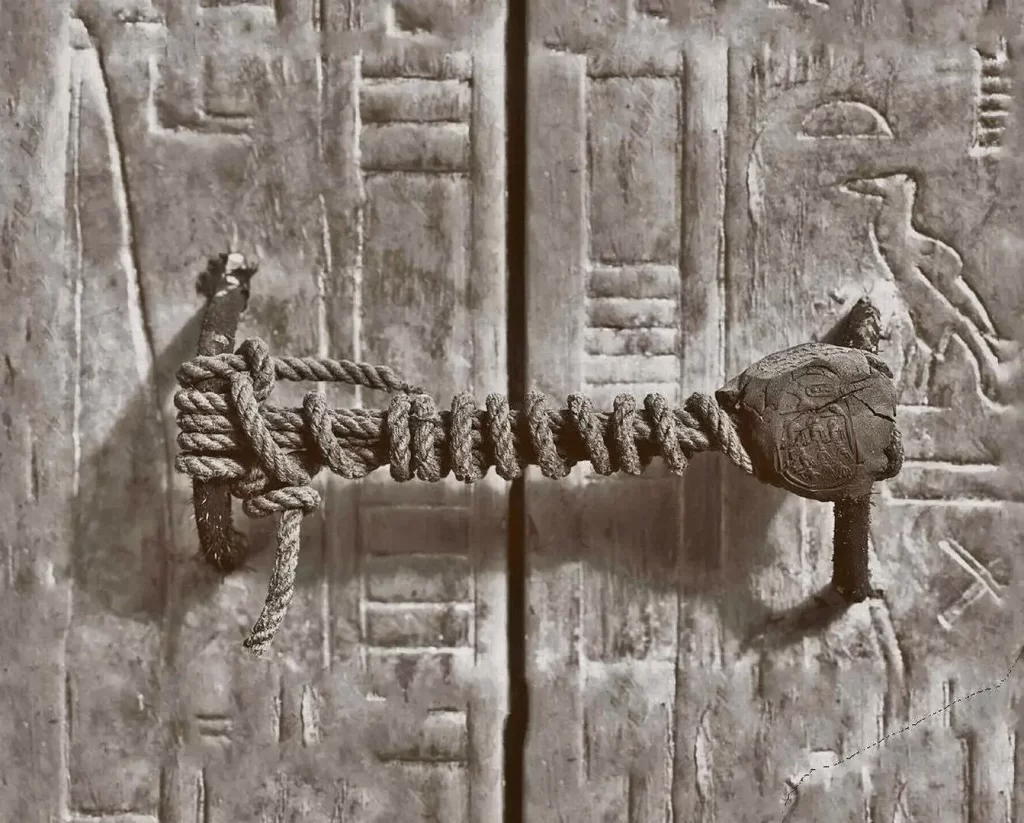
The King Tut phenomenon triggered a revived interest in Ancient Egyptian design. From the 1920s onward, Egyptian motifs percolated through various media, including interior design.
EGYPTOLOGY
In the late 18th century, Napoleon led a number of campaigns in Egypt in an attempt to acquire territory under the French flag. These military campaigns were ultimately unsuccessful, but did lead to a greater awareness of Egyptian antiquities as a result of Napoleon having brought a number of scientists and scholars with him to Egypt to document the culture and sights of the country. (Among the notable objects discovered by this French expedition was the Rosetta Stone.)
The collected works of these scholars were published by Napoleonic order beginning in 1809 as the “Description de L’Egypte.” This set, which comprised several volumes, was full of engravings depicting images of Egyptian culture, history, landscapes, and nature. Notably, three volumes were produced in folio size and considered to be the largest books ever printed up to that time. (I personally own an engraving from this folio set depicting the skulls of carnivorous mammals.)
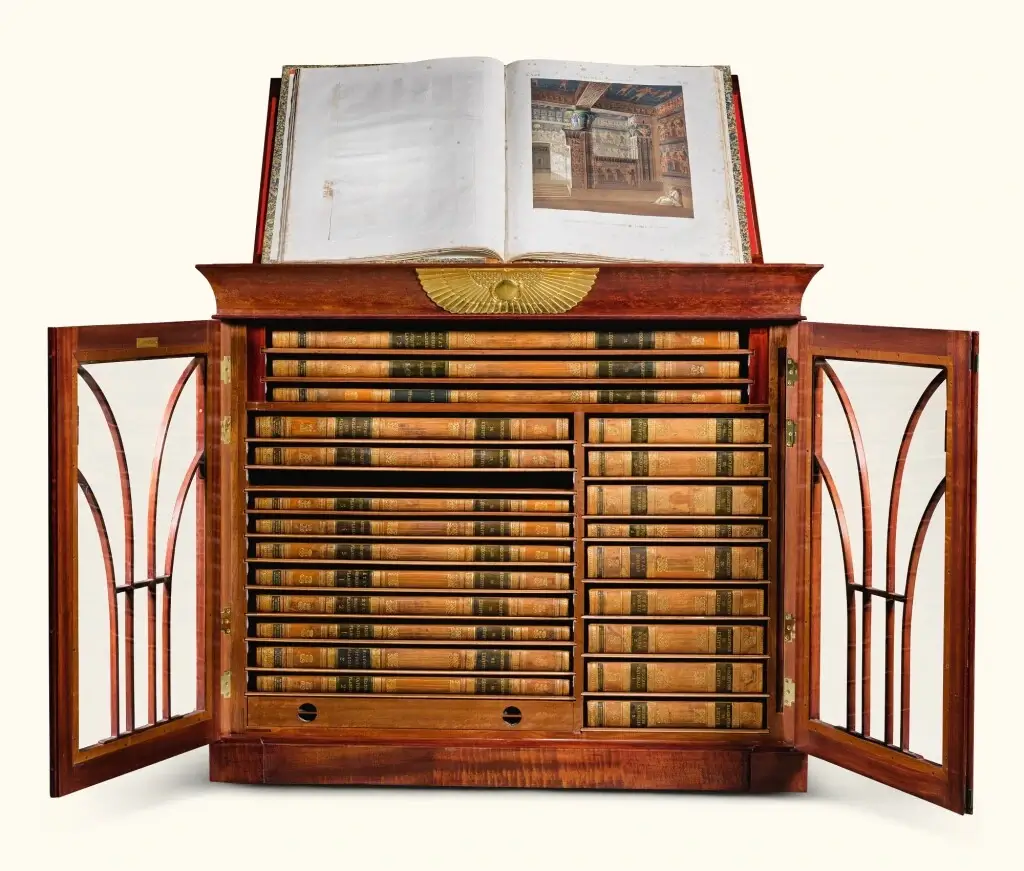
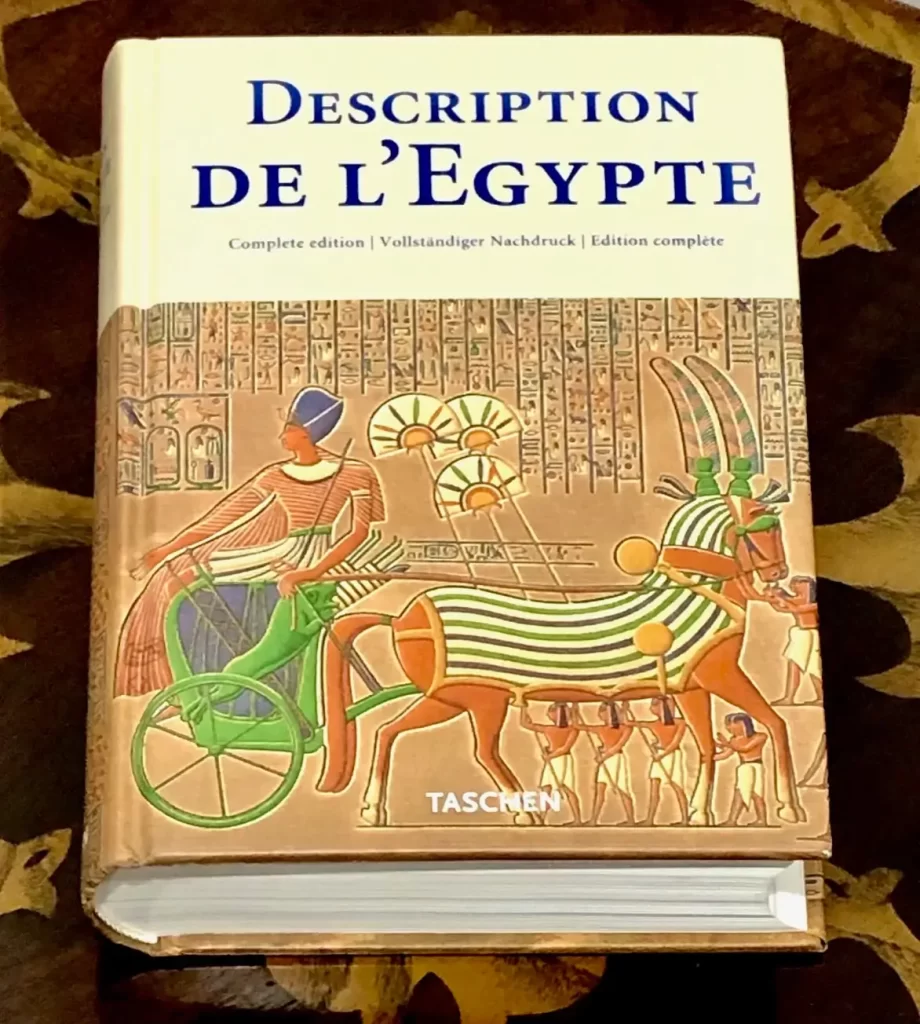
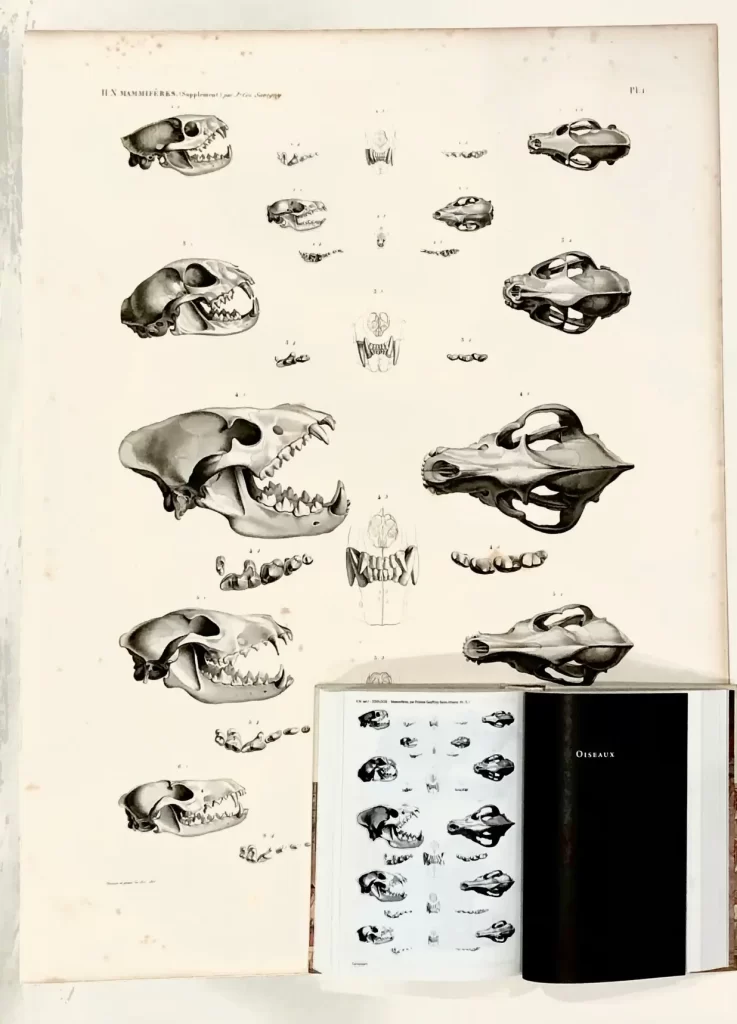
Napoleon’s Egyptian campaign and the publication of “Description de L’Egypte” gave birth to the academic field of Egyptology, but also led to the first modern Egyptian Revival in architecture and the decorative arts in the 19th century. Public fascination with all things Egyptian, called “Egyptomania” would then pulse throughout the 1800’s before again experiencing a massive surge following the discovery of Tutankhamen’s tomb in 1922.
TUTMANIA
The early 20th century saw a number of technological advancements in mass communication that allowed for the rapid dissemination of news, culture, and trends. The growth of radio as a broadcasting medium, especially, coincided with the discovery and subsequent investigation of King Tut’s tomb throughout the 1920s. During the first half of 1922, for example, the number of licensed radio stations in the United States had increased by several orders of magnitude. Coupled with the visual medium of movies, information and images about the rare Egyptian discovery rippled widely and rapidly around the world.
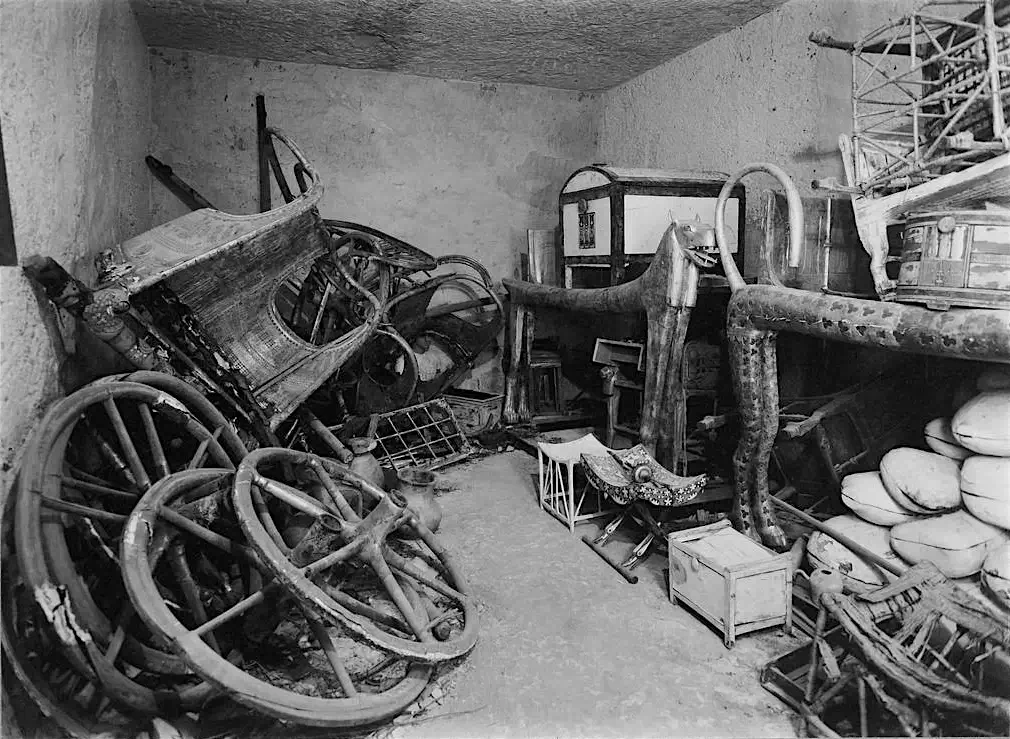
It is no wonder, then, that such a discovery would capture the public imagination and lead to a high demand for all things Ancient Egyptian. After all, for a public not far removed from the impacts of World War I and an influenza pandemic, a little exotic distraction proved most welcome. The mass frenzy would be called “Tutmania” and would lead to the production of myriad objects bearing some manner of Egyptian motifs. It certainly helped that the geometric designs taken from Ancient Egypt lent themselves well to the new Art Deco style.
Perhaps some of the most famous Egyptian Revival architecture and interiors from the 1920s comes from movie houses and other entertainment venues that sprung up around the United States and the world in the Jazz Age:
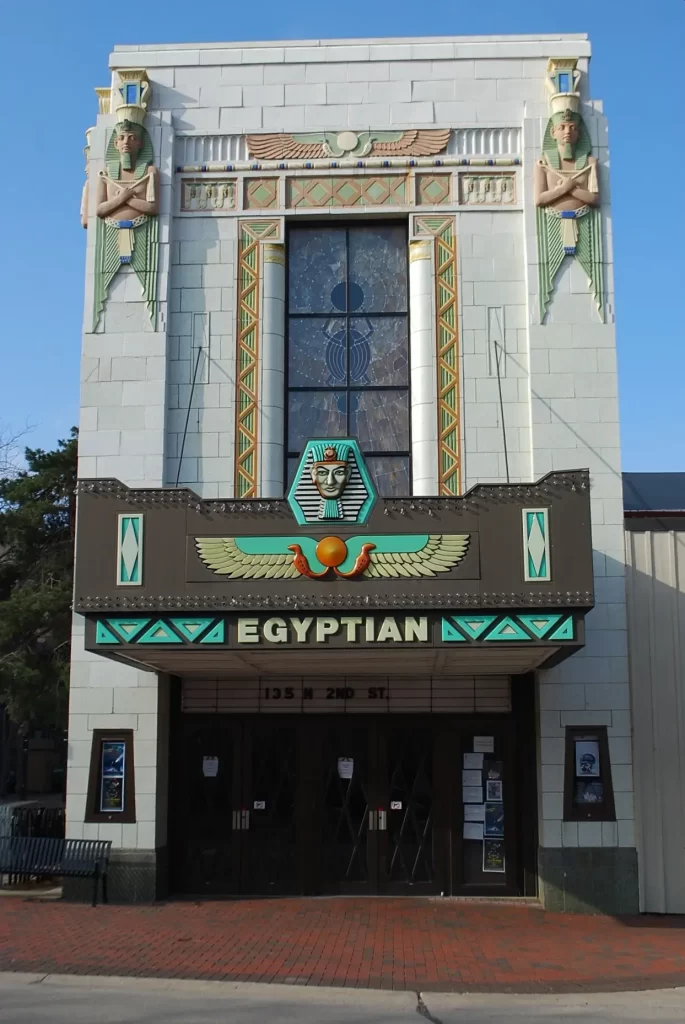

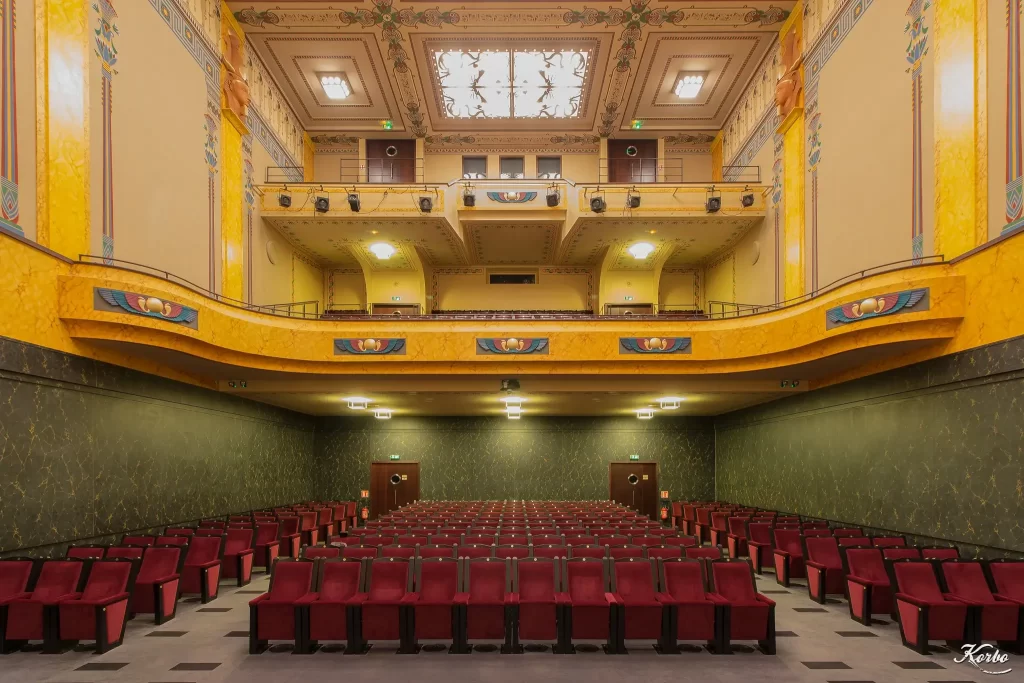
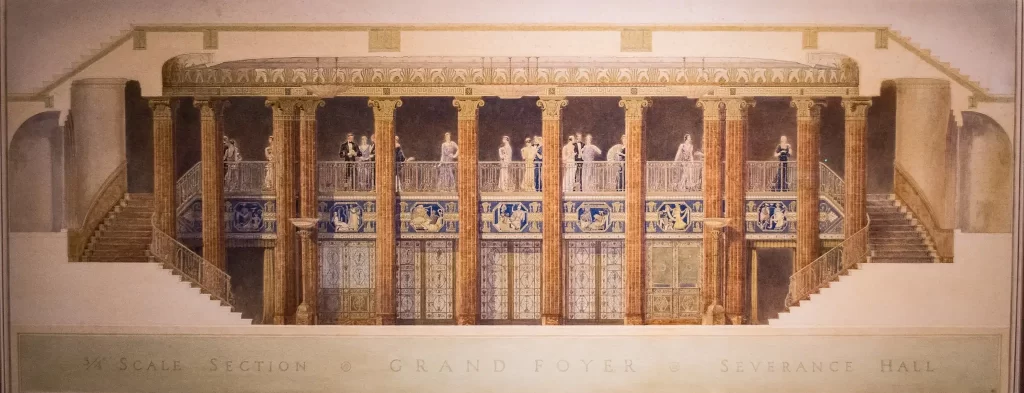
EGYPTIAN MOTIFS
There are a number of visual motifs found in Ancient Egypt that are often used in Egyptian Revival design. Below is just a sampling:
Egyptian Lotus or Water Lily
Scarab Beetle
Sun Motif or “Horus”
Other motifs include pyramids, obelisks, Sphinxes, and hieroglyphs. You might find these motifs used on furnishings, tapestries, jewelry, and bibelots, for example.
EGYPTIAN REVIVAL TODAY?
The Egyptian Revival sparked in the 1920s would wane as the world entered the Great Depression. It would experience a resurgence decades later when the treasures of King Tut’s tomb would go on tour in what would become the first blockbuster museum exhibition in history. When the traveling exhibition reached the United States in the 1970’s, “Tutmania” was so strong that it prompted American cultural and literary historian Paul Fussel to make a disparaging passing reference to King Tut souvenirs in his tongue-in-cheek (but no less insightful) 1980s book about the American class system.
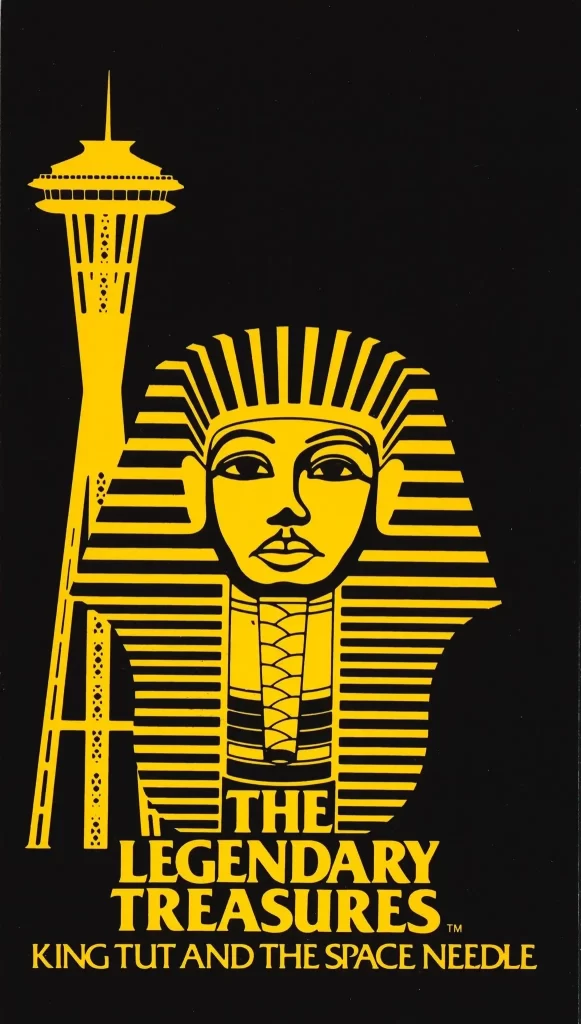
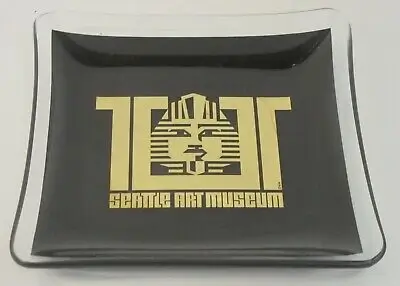
Keeping It Classy
‘Treasures of Tutankhamun opened the door for numerous opportunities in merchandising. Officially, there were two gift shops on the Seattle Center grounds: The main exhibit store offering merchandise approved by the Metropolitan Museum, the exhibit’s American tour organizer, and a second shop at SAM’s Modern Art Pavilion. Both offered an assortment of reproductions, publications, and gift items. A replica of the Selket statuette was the most-popular purchase.
Exhibit organizers were keenly aware of the dangers of commercialism, especially in a public forum the size of the Seattle Center. Internal memos and guidelines testify to the desire of both SAM and Center officials to keep things under control, particularly in the volatile Center House (then the name of the old Armory building, known during and after the World’s Fair as the Food Circus and later renamed the Seattle Center Armory). Merchants were required to obtain permission to sell any Tut-related trinkets. Apart from food vendors, hawkers were banned from the Center grounds. Meanwhile an entrepreneurial sort opened up a decidedly off-brand Tut store strategically located downtown under the Monorail on Westlake Avenue; Tutankhamun Treasures offered “authentic King Tut memorabilia, artfully crafted in enamel-like gold” (“Why Pay More?”).’
Excerpted from “Treasures of Tutankhamun exhibit opens at Seattle Center on July 15, 1978.”
By Eleanor Boba for HistoryLink.org, 2018
We can surmise, then, that the mass appeal of Egyptian designs in the decorative arts inspired by Tutmania became passé in the late 20th century and practically moribund into the 21st. In fact, outside of museum gift shops and mass-produced tchotchkes sold on sites like Wayfair, one would have difficulties finding much in the way of Egyptian-inspired decor in 2022. This is a shame, because some of the more academically informed reproductions of Egyptian furnishings can be quite beautiful and practical, like the Theban stool:
A few years back, the ceramics and home decor purveyor Jonathan Adler released a gilded trinket tray resembling the funerary mask of King Tut, which now appears to be discontinued.
Around the same time, mid-market furniture retailer West Elm released a limited collection of home goods inspired by Ancient Egypt with a contemporary twist. A small number of these are still sold on the website.
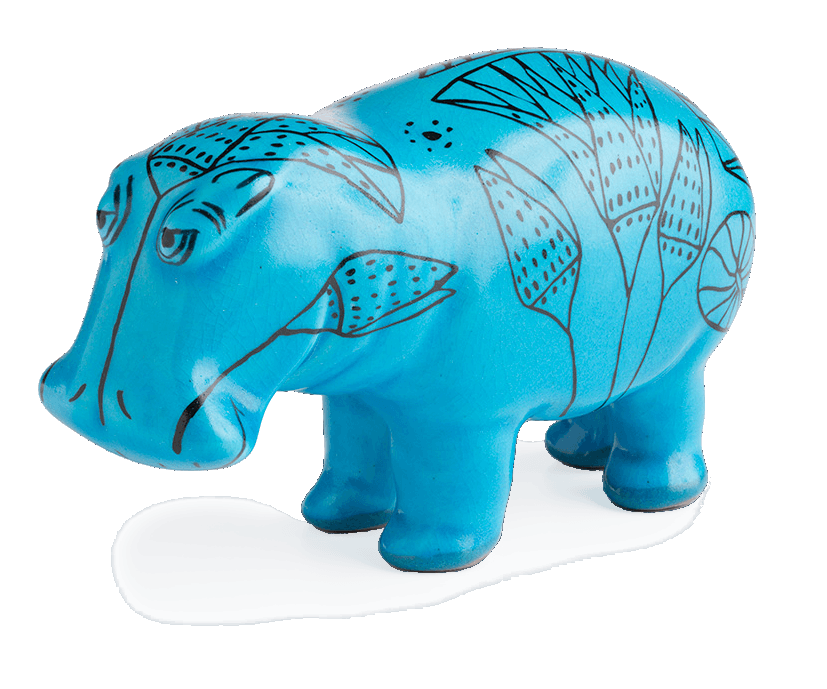
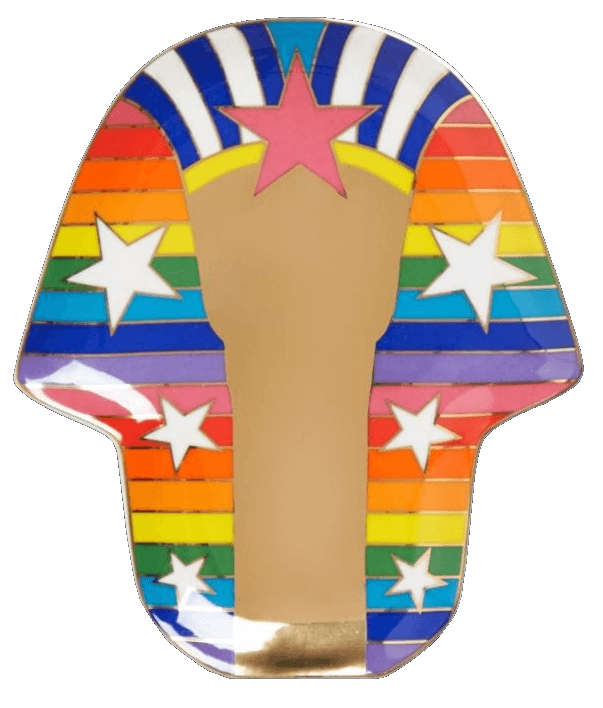

Whether this 100-year anniversary of the discovery of the tomb of King Tutankhamun will generate new home decor and furniture inspired by Ancient Egypt remains to be seen. However, Egyptian Revival design has a long history, and it comes out in pulses every few decades. I guess we will just have to see what 2023 has in store…
